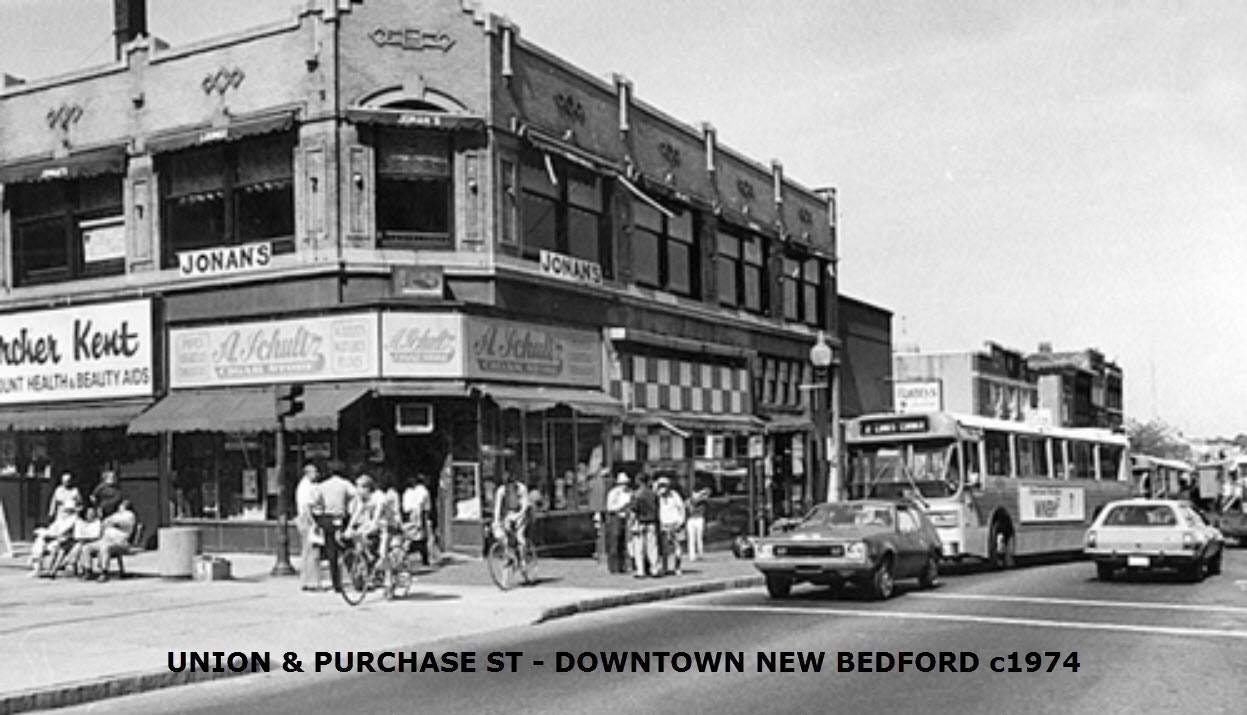Welcome back! And welcome to the many of you who somehow found me and subscribed during the holidays (apparently the Substack algorithm rewards not writing?)
Pedestrian Malltham?
According to the Globe, the City of Waltham (non-Mass folks, this is pronounced “Wall-tham”) is considering permanently pedestrianizing six blocks of Moody Street, the thriving heart of its downtown. Apparently, 90% of residents surveyed support the idea of permanently blocking off the street from car traffic.
The push to pedestrianize Moody accelerated during COVID, when temporary car bans on the street proved to be a big hit, creating a thriving strip where residents and visitors alike flocked to dine and shop. The idea has been successfully tested during the summer since then. Time to go for it?
Regular readers know I’m no fan of how U.S. downtowns were gutted to make room for cars. I’ve used a lot of ink talking about how misguided attempts to design our communities exclusively for driving have made towns like mine more dangerous, less financially sustainable, and less healthy for all of us. Given that, you might guess that I’d be all for permanently pedestrianizing a place like Moody St. I’m not— or at the very least, I’d urge a lot of caution before proceeding. Pedestrianization of a main street like this is likely not the right move. It’s a case worth digging into to clarify some first principles.
The Walking Death Sentence
Let’s start here: I don’t think cars are bad. I have two of them. I drive at least a few times a week. Despite shifting most of our travel to biking, Ms. G and I don’t see living a car-free life in our neighborhood as a goal we can realistically pursue anytime soon. I am not anti-car. But I AM pro thriving downtowns. And downtowns, especially neglected ones, can be fragile. The fastest, surest, and most common way to kill a main street is to prioritize car throughput and off-street parking. That said, another tried-and-true way to kill a main street is to pedestrianize it completely. Take it from Jeff Speck, author of The Walkable City:
Face it: you aren’t Copenhagen, where cyclists outnumber motorists. You aren’t New York, where pedestrian congestion can actually make it impossible to walk south along Seventh Avenue near Penn Station at 9:00 a.m. Unless you have similar residential and pedestrian density and stores that can trhive in the absence of car traffic— a rarity— to consign a commercial area to pedestrians only, in America, is to condemn it to death1.
New Bedford attempted to pedestrianize Purchase St. in the 70’s and it failed, just as similar efforts failed in countless cities across the country. I’m sympathetic to the impulse to eliminate cars from downtowns that are starting to take off. But as Speck notes, unless you’re in one of a small handful of cities in the U.S. that has achieved a high degree of walkability (ie, Boston, NYC), you probably need to walk before you run…with pedestrianization? The key to revitalizing any downtown is indeed attracting foot traffic. But attracting that foot traffic cannot be done by declaration (“they’ll flock to it!”). It’s an art that requires a willingness to engage in humble observation, trial and error, and small bets. To their credit, it looks like Waltham city leaders have been taking this approach. But it may be that, at the moment, a certain percentage of downtown patrons are going to arrive by car. And that percentage of customers, however small, could make all the difference for the bakery, coffee shop, or tailor trying to make it work on your main street.
Don’t get me wrong, I love spending time in pedestrianized city centers. My first date in Fifth Grade was at the Pizzeria Regina in Quincy Market, and being able to walk around aimlessly after lunch and browse shops in a crowd was great cover for my utter lack of game. But most downtowns aren’t there yet. And we don’t need to ban cars completely to mitigate most of the harm they do to a place. We just need to design streets that let cars know that they’re guests at the party, welcome as long as they behave and don’t fuck things up for the VIP’s. Stoking high conflict by pitting drivers against non-drivers is a detour cities like Waltham and smaller towns like Fairhaven can’t afford to take. We need our downtowns to thrive. In most cases, calming traffic—not banning it—will yield better results with less political and economic risk.
Speck revisited this idea in the 10th Anniversary edition of the Walkable City, emphasizing, “I’m all for more [pedestrian malls], everywhere. What needs testing site-by-site is their viability for retail.”






I got dirty looks from everyone years ago for suggesting Fairhaven discontinue the one block of Center Street between the Town Hall and the library and making that more of a town green. This is already done on five Thursday nights in the summer for the concerts. It was also done this year of the Olde-Tyme Holiday Village. (And a larger area is shut down for the Homecoming Day Fair, Pride Day, and the Manjiro Festival.) The "street" area could possibly remain hard surfaced, allowing food trucks to park or dancing, if the road were blocked by removable bollards.
On that block as it is, there are just 4 to 5 legal parking spaces on the north side of Center. Blocking it at William and Walnut would not decrease the number of spaces. It might even add one or two, depending on the length of the vehicles, because space on the east side of William and the west side of Walnut would offset the loss.
Making ANY changes in Fairhaven (one-way Main and Middle streets , anyone?) are going to face so much small-minded opposition that eventually I gave up trying.